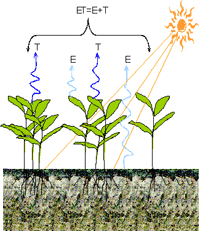Agricultural Research Division of IANR

West Central Research and Extension Center, North Platte
Date of this Version
2020
Citation
Published in Environmental Entomology, 2020, 11pp.
doi: 10.1093/ee/nvz161
Abstract
Drosophilid species with different life histories have been shown to exhibit similar behavioral patterns related to locating and utilizing resources such as hosts, mates, and food sources. Drosophila suzukii (Matsumura) is an invasive species that differs from other frugivorous drosophilids in that females lay eggs in ripe and ripening fruits instead of overripe or rotten fruits. We hypothesized that there may be diurnal and/or seasonal patterns associated with the movement of drosophilid species into and out of crop fields and their attraction to fermentation-odor-based monitoring traps, and that D. suzukii would conform to similar patterns. To test these hypotheses, we deployed passive, 2-headed Malaise traps between crop fields and wooded edges to simultaneously catch flies moving into and out of crop fields. We also deployed monitoring traps with a fermentation-based bait between crop fields and wooded edges and within crop rows. Traps were deployed weekly in June–August in 2014 and 2015 at two commercial blackberry farm in Cleveland County, NC, and were checked hourly for 24 h, except during darkness. Both D. suzukii and other drosophilid species moved between crop fields and wooded edges and were attracted to monitoring traps primarily during the morning and evening hours. Whereas other drosophilids were captured in traps throughout the season, few D. suzukii were caught in traps until early to mid-July in both years and increased as the season progressed. Understanding D. suzukii movement and activity patterns is essential for the development of effective management strategies.


Comments
Copyright © 2020 Katharine A. Swoboda-Bhattarai, and Hannah J. Burrack. Published by Oxford University Press on behalf of Entomological Society of America. Used by permission.